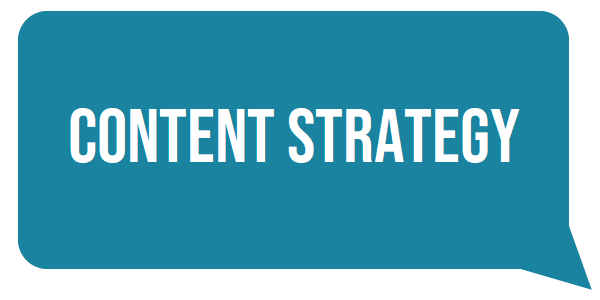
Things change too quickly for you to cling tightly to any one content strategy for too long. Both of your audiences (humans and search engines) change over time - sometimes quickly. Just putting out regular content and targeting a few keywords is not an adequate SEO strategy; you’ll get left behind. Everything needs to be part of an intentional plan that uses your resources for the best ROI.
Diversifying your content strategy is a key part of staying competitive in today’s landscape. Maximizing SEO is only getting more important as more B2B engagements are happening online with little to no human interaction. As you think about what a robust and SEO-focused content strategy is going to look like for your firm over the next few years, these are some of the things to be thinking about.
What is content?
You’ve heard me say it before, content marketing is the foundation for any marketing strategy. There’s no one right way when it comes to content marketing, but it’s always best to have a thoughtful plan in place. Here are a few popular types of content and how they can fit into your content strategy:
- Blogs- Every firm should have a blog. It’s a great way to build and strengthen your SEO--When done right. Posts have to be SEO optimized and published frequently to make a difference. As readers find value in your blogs, they are more likely to subscribe to your newsletter, return to your site or follow you on social media.
- Videos- The popularity of video only continues to grow. It’s a quick and easy way to share useful information while getting your personality across. Be sure to include captions to improve accessibility and for SEO. Plus, ninety-two percent of viewers watch video without the sound when viewing on mobile. And everyone is watching online videos, from seventy-three percent of people ages thirty-six to forty-five and sixty-seven percent of people fifty-six and up..
- How-to’s, Checklists and Top 10 Lists- These types of resources tend to rank well on Google. And it makes sense. Who hasn’t started a Google search with, “How to…?” If this content is freely available on your site, it should be concise, easy to digest and leave the reader wanting more. And make it easy for them to get it! Link to your service pages or appropriate firm members so it’s easy to request additional help, learn about your service offerings or firm.
- Podcasts- If you love chatting about your favorite topics, are looking for opportunities to collaborate with peers and other people in your industry, a podcast might be right for you. Show a less formal side of yourself while sharing your point of view on topics you may not cover on your blog. Creating content people can enjoy while driving, exercising or cleaning the house will surely gain you (and subsequently your firm) a loyal following.
- Gated Content- Anything that requires the user to fill out a form or complete some other action before receiving the content. Whether it’s an ebook, a guide, step-by-step instructions or webinar, gated content should have the highest value of anything you produce. At the very least, you're asking the visitor to provide their email address (aka 21st century currency), so you want to make it worth it to them. Since gated content is generally a pdf, make sure it’s accessible through an SEO optimized page or blog post. However, it’s not enough to just collect email addresses. Be sure to have a plan to follow up and nurture those leads, whether it’s with a series of marketing emails, adding them to your newsletter list or sending a personal email to see if the person requires any additional assistance.
A robust content strategy will include all of these types of pieces in varying amounts, which will then become the base for a social media calendar, newsletter or email marketing.
Choosing your content streams is just one half of the content marketing pie. The second, and equally (if not more) important part is choosing what you’re going to cover. When planning your content, keep two things in mind: Keywords and audiences.
Expand Your Keywords—and Your Content
For SEO, keyword strategy should be the core of your content plan…but it’s essential to keep honing and evolving that strategy. What worked to keep you near the top of search results five years ago won’t necessarily work today. There needs to be a big-picture plan at work. In addition to targeting long-term keywords, we want to be thinking about keyword families too. Clustering related keywords can help you create content that addresses the specific topics people are looking for, instead of just repeating one keyword over and over in one blog. This is going to be a huge asset for your SEO strategy.
You also need to be thinking about ways to expand your content itself. What other topics and services are your audience interested in? Even if you don’t provide those services yourselves, use your own content to meet those needs. Maybe this means you use guest authors to write blogs about topics you’ve never covered before, or venture out on your own to cover new topics. Maybe you create a new series or comprehensive guide that’s focused on a new element of your field.
Know Your Audiences
If you’re going to design a content strategy that actually cuts through the noise and reaches your target audiences, it can’t be generic. When you receive snail mail that’s addressed to “Resident,” you likely assume it’s something you can toss in the recycling without a second thought. The same response happens when people scroll past mass-marketed emails. If you have 100 new messages in your inbox, you’re probably not going to click on one that doesn’t seem relevant to you or your needs.
Segmentation is key. Your audience is not homogenous. Segmenting them into groups based on their shared qualities allows you to deliver hyper-specific content to the people who are most likely to actually engage with it. (For example, a firm with clients spread over the Northeast needs to be able to send targeted messages to just the Massachusetts clients when new legislation passes that’s specific to the Commonwealth.)
Think outside the box when you’re thinking about your segments. Clients, prospects, former clients, referral sources and potential job applicants all want different types of communication. And they may want it in different formats. Experiment to see what works. It doesn't matter how great your content is if the right people aren’t looking at it.
And yes, this is all part of your SEO strategy! Targeting the right messages at the right groups and getting them to view that content on your site will tell Google that certain areas of your site are popular, which improves your SEO for those keywords.
Your content strategy should be a roadmap that helps your firm navigate and thrive in a competitive digital marketplace. Let’s talk about your firm’s goals and how marketing can help you get there. Contact me today!



